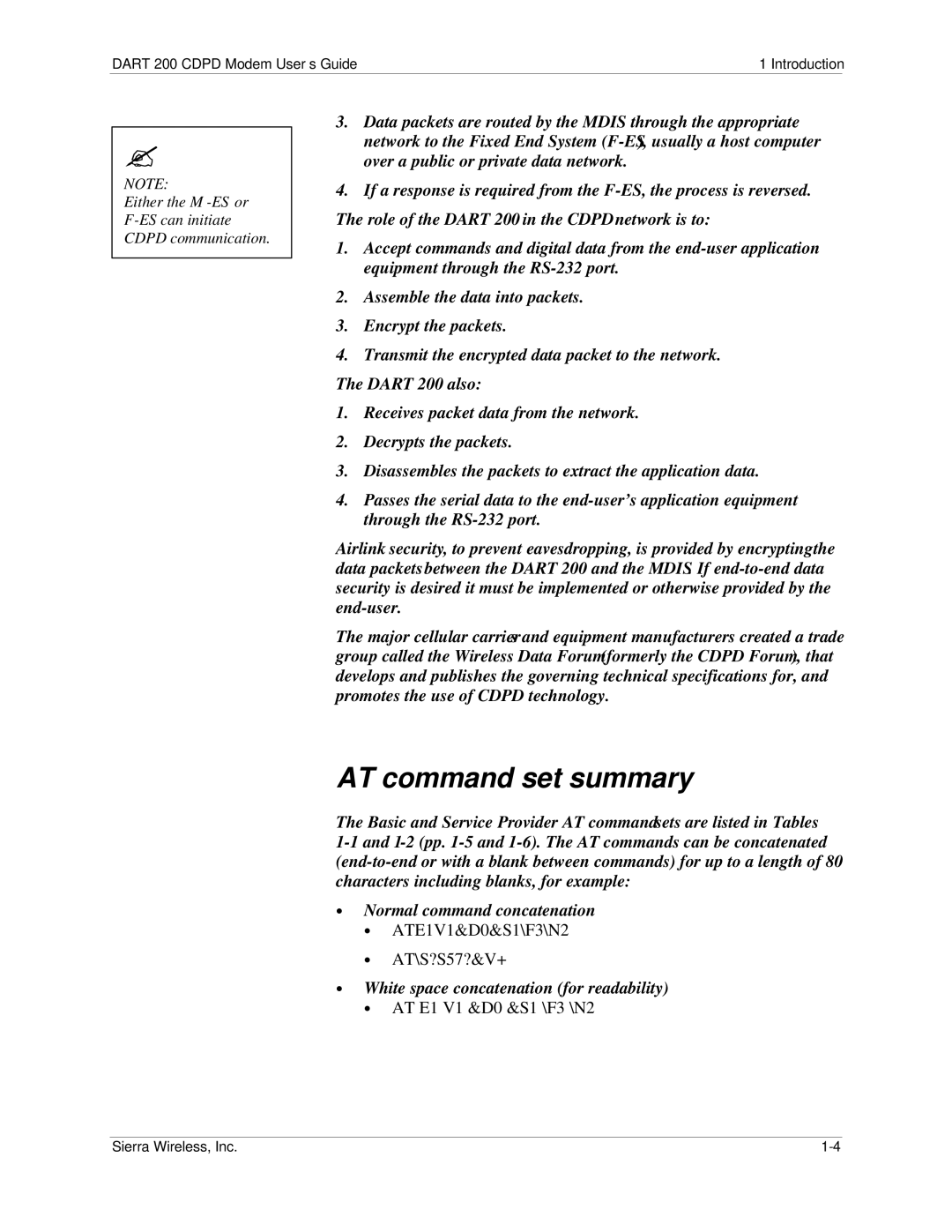
DART 200 CDPD Modem User’s Guide | 1 Introduction |
?
NOTE:
Either the
3.Data packets are routed by the MDIS through the appropriate network to the Fixed End System
4.If a response is required from the
1.Accept commands and digital data from the
2.Assemble the data into packets.
3.Encrypt the packets.
4.Transmit the encrypted data packet to the network.
The DART 200 also:
1.Receives packet data from the network.
2.Decrypts the packets.
3.Disassembles the packets to extract the application data.
4.Passes the serial data to the
Airlink security, to prevent eavesdropping, is provided by encrypting the data packets between the DART 200 and the MDIS. If
The major cellular carriers and equipment manufacturers created a trade group called the Wireless Data Forum (formerly the CDPD Forum), that develops and publishes the governing technical specifications for, and promotes the use of CDPD technology.
AT command set summary
The Basic and Service Provider AT command sets are listed in Tables
∙Normal command concatenation
∙ATE1V1&D0&S1\F3\N2
∙AT\S?S57?&V+
∙White space concatenation (for readability)
∙AT E1 V1 &D0 &S1 \F3 \N2
Sierra Wireless, Inc. |
